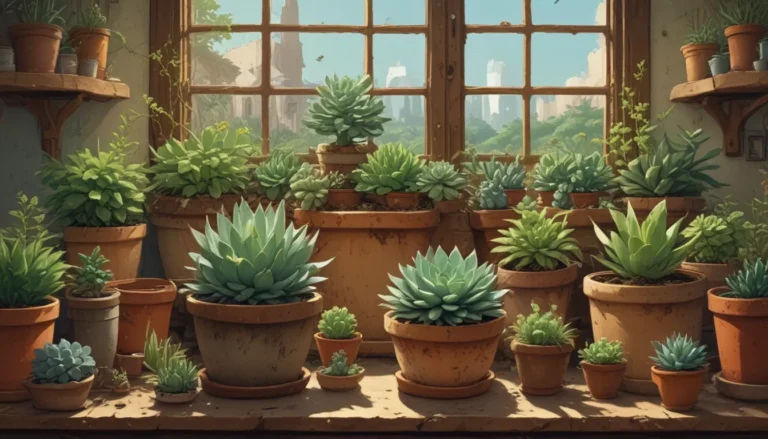The Ultimate Guide to Planting and Growing Catmint: Everything You Need to Know

Welcome to the ultimate guide on how to plant and grow catmint! In this comprehensive article, we will dive deep into the fascinating world of Nepeta spp., a genus of flowering perennials in the mint family that includes popular herbs such as catnip and Faassen’s catmint.
If you are looking to add a beautiful, low-maintenance plant to your garden that not only attracts pollinators but also repels pests, then catmint is the perfect choice for you. With its aromatic foliage and long-blooming flowers, catmint is a must-have for any garden.
So, let’s get started on learning everything you need to know about growing catmint plants.
What Is Catmint?
Catmint, also known as Nepeta, is a genus that includes 250 species of herbaceous perennials and a few annuals. These plants are commonly found in dry, sunny areas with rocky soils in USDA Hardiness Zones 3 to 9. Known for their drought resistance and aromatic foliage, catmint species like catnip, Persian catmint, and Faassen’s catmint are popular choices among gardeners.
Popular Catmint Species:
- Catnip (Nepeta cataria): Traditional medicinal herb with intoxicating effects on cats.
- Persian Catmint (N. mussinii): Low-growing perennial with lilac flowers.
- Faassen’s Catmint (N. x faassenii): Mounding hybrid with attractive lavender flowers.
Cultivation and History
Originating from Europe, Asia, and Africa, Nepeta species have a rich history as culinary herbs, ornamental plants, and herbal remedies. Introduced to North America in the 1800s, catnip (N. cataria) has been used for its medicinal properties, while other species like N. mussinii and N. x faassenii are grown for their ornamental value.
Catmint Plant Propagation
Catmint plants are easy to propagate through various methods such as seed, division, and cuttings. Here’s a quick guide on how to propagate catmint:
From Seed:
- Start seeds indoors or direct sow in well-draining soil.
- Lightly cover seeds and keep moist until sprouts appear.
- Cold stratification and soaking can improve germination rates.
By Division:
- Divide established plants during the growing season.
- Replant divided sections in the garden or containers.
- Water regularly until plants are established.
From Cuttings:
- Take cuttings in the spring from new growth.
- Root cuttings in soil or water.
- Transplant rooted cuttings into the garden or containers.
From Seedlings/Transplanting:
- Harden off seedlings before planting outdoors.
- Plant in well-draining soil with adequate spacing.
How to Grow Catmint Plants
Catmint plants thrive in full sun and well-draining soil with a pH between 5.0 and 7.5. Here are some essential growing tips for catmint:
Growing Tips:
- Plant in well-draining soil with a pH between 5.0 and 7.5.
- Amend soil with compost for increased vigor.
- Space plants 18 inches apart.
- Provide 1 inch of water per week initially.
- Mulch around the base for improved drainage.
Pruning and Maintenance
To keep catmint plants healthy and blooming, regular pruning and maintenance are essential. Deadheading after the first bloom and trimming back foliage can promote a fuller second bloom. If plants become too invasive, dividing them each season can help manage their growth.
Species and Cultivars to Select
When choosing catmint species and cultivars for your garden, consider factors such as growth habit, flower color, and height. Here are some popular catmint varieties to consider:
- Nepeta cataria: Traditional catnip with large, toothed leaves and small white, purple, or pink flowers.
- Nepeta mussinii: Compact mounding ornamental with lavender blue flowers.
- Nepeta x faassenii ‘Walker’s Low’: Sterile cultivar with lavender blue flowers.
- Nepeta nervosa ‘Blue Moon’: Showy cultivar with lavender flowers.
Managing Pests and Disease
Catmint plants are relatively pest and disease-resistant. However, occasional visits from insects like aphids, slugs, and spider mites can occur. To manage pests, consider using insecticidal soap or handpicking. Keep an eye out for common diseases like bacterial leaf spot and blight, and remove infected foliage promptly to prevent spread.
Harvesting and Preserving Catmint
Harvest catmint leaves and flowers during midsummer when they are at their peak flavor. Harvesting can be done by cutting stems and drying the leaves for later use in teas or catnip toys. Store dried leaves and flowers in airtight containers in a dark, dry place.
Best Uses for Catmint Plants
Catmint plants are versatile and can be used in various ways in the garden:
- Mixed plantings and borders.
- Companion plants with roses and vegetables.
- Container planting on balconies or porches.
Consider using catmint to attract pollinators, repel pests, and add beauty to your garden.
Quick Reference Growing Guide
Plant Type: Herbaceous perennial
Hardiness (USDA Zone): 3-9
Exposure: Full sun
Spacing: 18 inches
Height: 2-4 feet
Spread: 4 feet
Water Needs: Moderate to low
Attracts: Bees, butterflies, hummingbirds
Family: Lamiaceae
Species: Cataria, faassenii, mussinii (racemosa), nervosa
Almost Too Easy
In conclusion, growing catmint is almost too easy! With its aromatic foliage, beautiful flowers, and multiple uses in the garden, catmint is a valuable addition to any garden. Whether you are a seasoned gardener or a beginner, catmint is a low-maintenance plant that offers beauty, functionality, and entertainment for your furry friends.
So, what are you waiting for? Start growing catmint in your garden today and enjoy the many benefits these wonderful plants have to offer.
Share your favorite Nepeta species and cultivars in the comments below and let us know how you are using catmint in your garden!
For more information on growing mint family plants, check out our related articles on catnip vs. catmint, how to grow mint in the garden, and how to care for peppermint plants.
By following these tips and guidelines, you can grow healthy catmint plants and enjoy their beauty and benefits in your garden. Whether you are a seasoned gardener or a beginner, catmint is a versatile plant that can enhance your garden and attract pollinators. So, get ready to plant and grow your very own catmint and enjoy the beauty and benefits it brings to your outdoor space!





